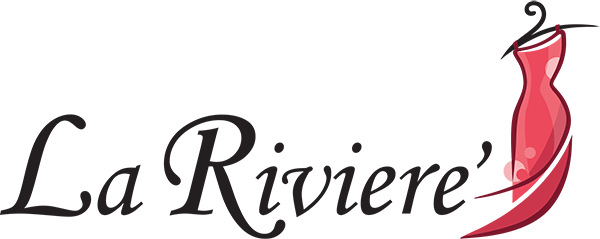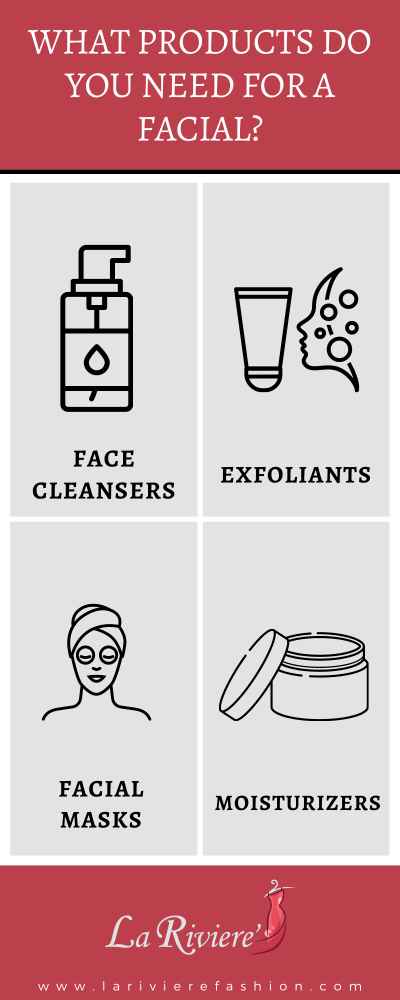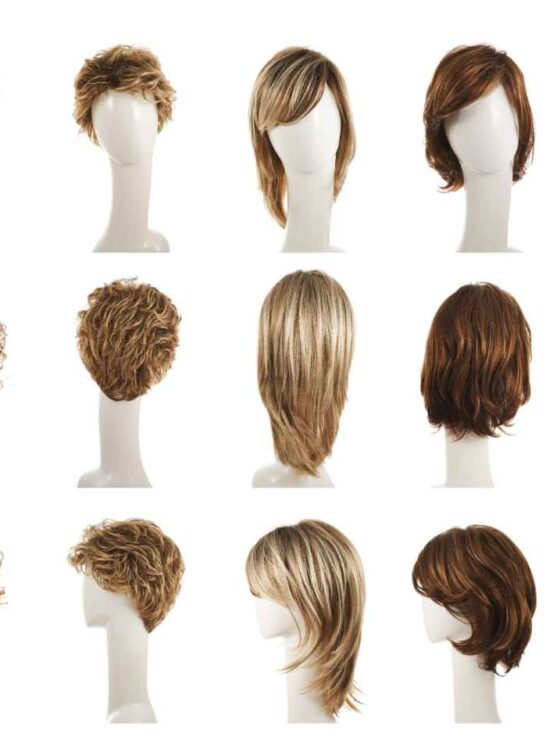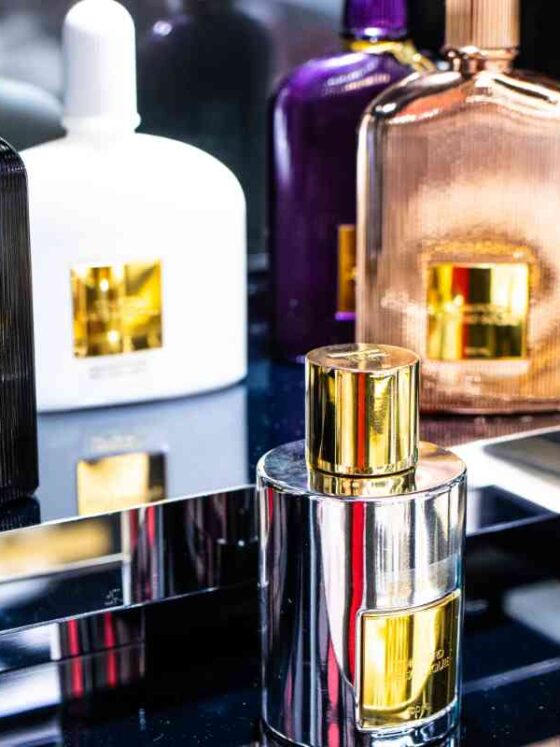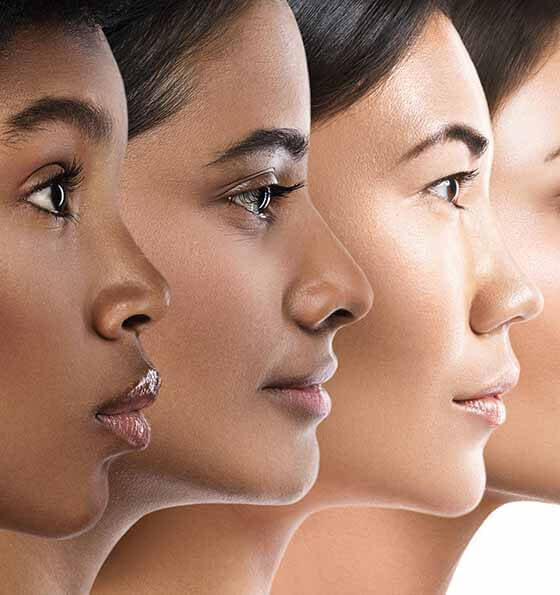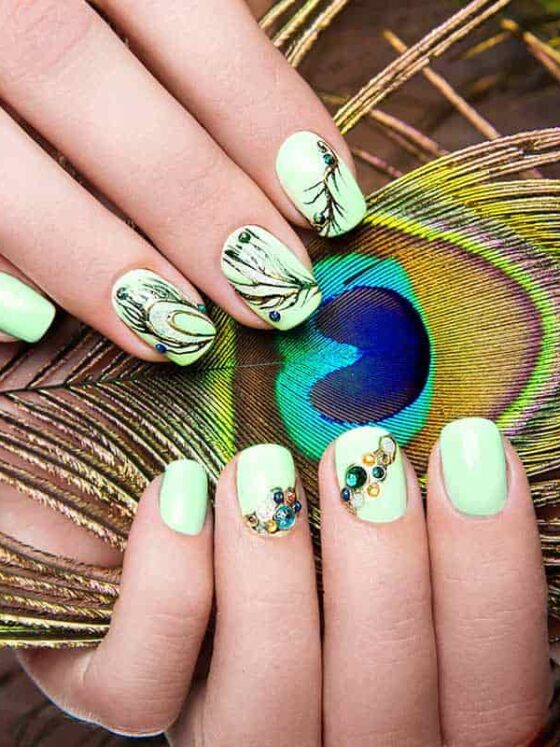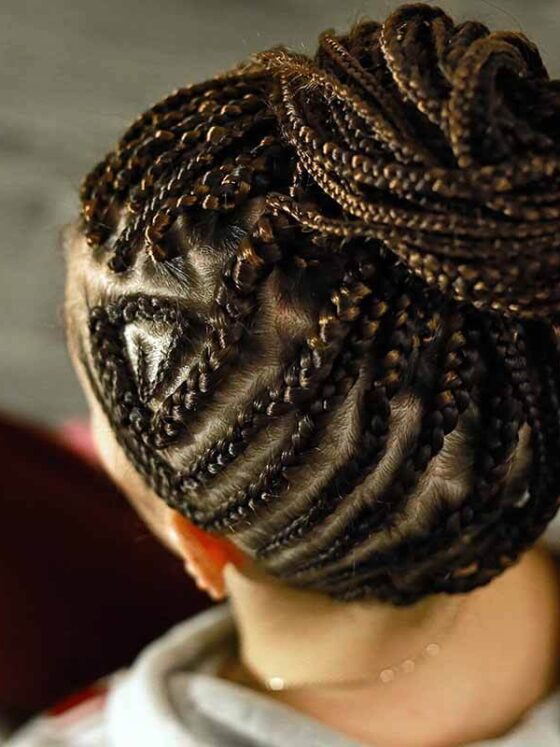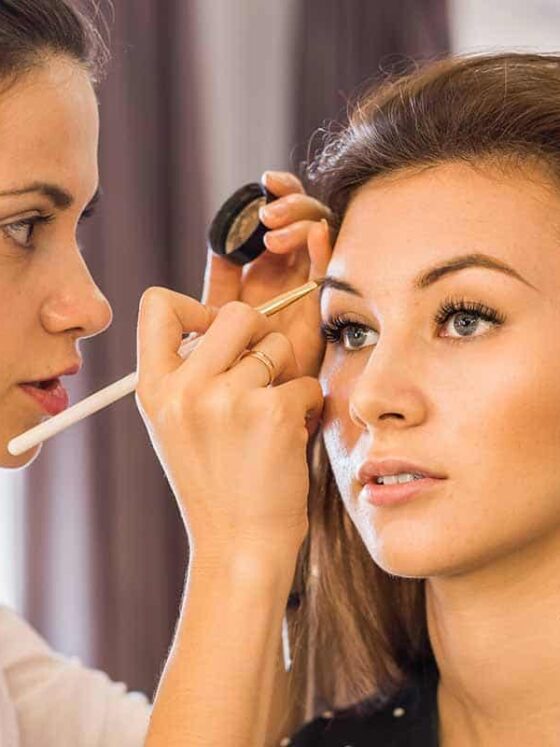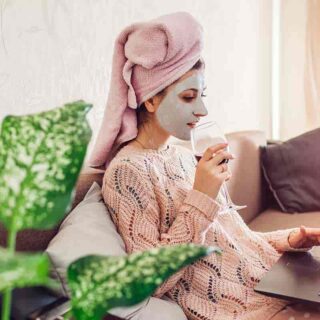The Essential Products Needed for a Facial
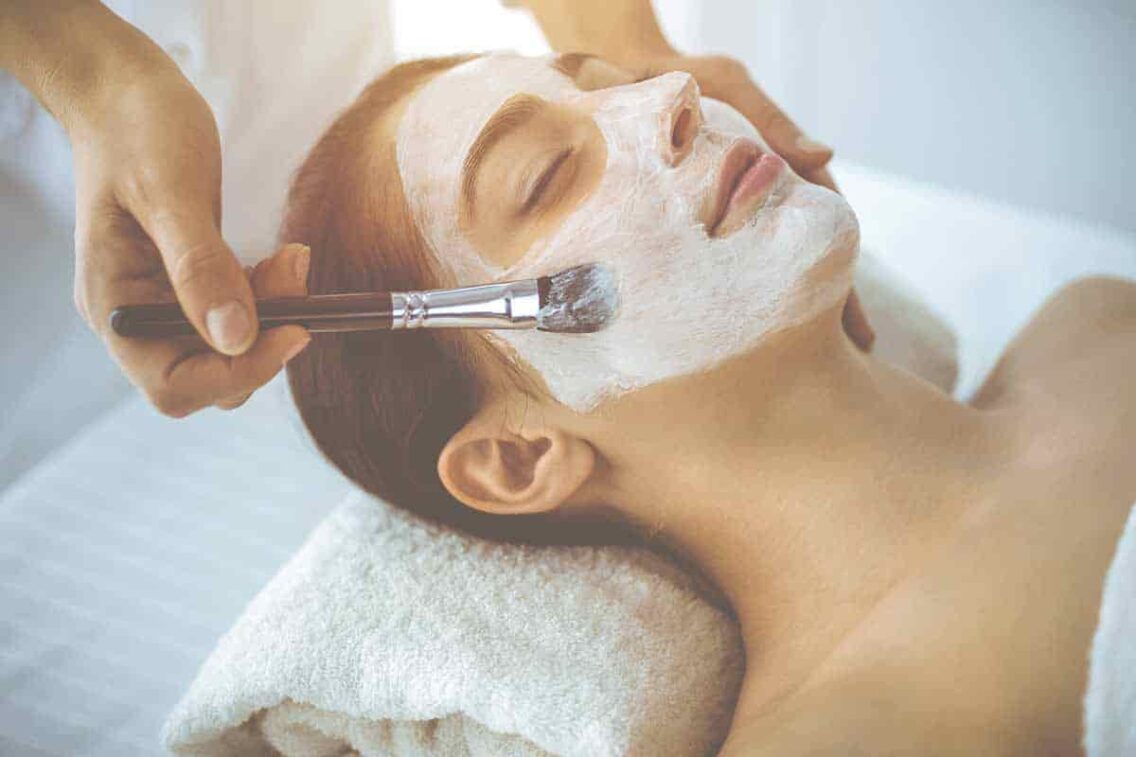
Facials can do wonders to make you look younger and more radiant in the face, but they require that you have the right products to do the job. Facials are one treatment where quality ingredients make a major impact on your final results.
Below you’ll find a breakdown of the four most essential products you need for a luxurious home facial. With the right products, you can give yourself a facial at home that is as good or even better than some professional facials you might receive from a spa.
What Is a Facial?
A facial is a specialized form of skincare treatment that centers around improving the skin of the face. More advanced facials can also incorporate techniques designed to address specific issues with the face, such as aging or acne.
Facials are responsible for tackling the following issues with facial skin (Source: Grand Beauty Spa):
- Skin analysis: Before you even begin performing a facial on yourself or someone else, you’ll need to do an analysis of the facial skin. Everyone has slightly different complexions, lifestyles, and levels of oiliness in the skin, and these factors can affect what type of facial products you use.
- Cleansing: The first steps in a facial procedure are usually aimed at cleansing the skin before treating it. This cleansing wipes away any oil, dirt, and debris from the surface of the skin before treating it with moisturizers or serums.
- Exfoliating: One of the issues that cause skin to look aged or develop issues like blackheads is a layer of dead skin on the skin’s surface that can trap oil and other debris. This causes inflammation and enlarged pores that can keep skin from looking smooth and glowing. Exfoliation uses abrasion to remove this dead skin.
- Extractions: For people who deal with blackheads, whiteheads, and other issues with the skin, facials can be used to extract these impurities from the skin’s surface. Extraction can be performed through masks, peels, nose pads, and microdermabrasion treatments.
- Toning and moisturizing: Once skin has been cleansed and exfoliated, most facials include a step where the skin is toned and moisturized. This is also the step in a facial where sunscreen is applied.
The steps of a facial may differ from facial to facial since some facials include extra steps like steaming or treating facial blemishes. However, cleansing, exfoliating, extracting, and moisturizing are the main steps you’ll see in most facial tutorials.
The 7 Best Fashion Designers in the World
If you fancy yourself a fashion guru, then any of these names on the list come as no surprise to you. But what exactly went into deciding who made the cut for the top seven? We briefly mentioned a few things earlier that were important factors, but here’s the complete list:
- Notoriety outside of the fashion world
- Accessibility to the public
- Quality of designs
- Size of the brand
- Influence on the industry overall and of course fashion trends
How Much Does a Facial Cost?
The cost of a professional facial depends on the type of facial treatment you’re getting. A basic facial will be on the low end of the cost spectrum, while more advanced treatments like chemical peels or specialized luxury ingredients like green tea, gold, or caviar may cost more.
Here are some of the price ranges you are likely to see if you go to get a facial at a professional beauty salon (Source: Thervo):
- $35-$50: Most basic facials in a salon will run between $35-50. These facials will only include basic treatments like cleansing and exfoliating, and will usually include some kind of mask.
- $60-$100: More advanced facials may include treatments such as microdermabrasion or chemical peels. These intermediate facials will run upwards of a hundred dollars and will typically include the products featured in more basic facials as well.
- $100-$250+: Luxury facials usually include top-shelf ingredients like 24-karat gold and caviar. Luxury facials may also include specialized masks and facial massage. Facials that include high technology such as high-frequency or ultraviolet light treatments can also be more expensive.
The cost of a facial ultimately depends on what you’re willing to pay for one. If you want to get the results of a professional facial at home, using the right high-quality products can give you comparable results at a much lower cost.
With home facials, it’s best to go with the highest-quality ingredients and products you can find. It may take a little experimentation to find a combination of products that work best for your skin, but it’s well worth the effort to find a skincare regimen that works for you.
If you are interested in becoming a facial esthetician check out this article!
About How Much Does a Home Facial Cost?
You might not believe that a home facial is less expensive than getting a facial in a salon. After all, just a jar of top-quality facial lotion can cost eighty dollars on its own.
The thing to keep in mind with home facials is that even though the initial cost for gathering the supplies may be several hundred dollars, each of these facial products is good for several applications. This means that you’ll end up paying less for these products over time than you’d pay if you got several professional facials in a salon. (Source: Bustle)
What Products Do You Need for a Facial?
There are several categories of products that you need to do a DIY facial at home. Here is an overview of the product categories you’ll need to look at.
1. Face Cleansers
Using soap formulated for your body is bad for your face since the skin there is thinner and more fragile. Instead, use foaming or liquid face cleansers that can remove oil and debris gently without causing irritation.
These are some of the best face cleansers on the market for giving yourself a facial from home:
- Aveeno Daily Facial Wash: This facial wash from Aveeno is formulated with several smoothing oils. These include rich soy extract, castor oil, and jojoba oil that provide moisture without causing skin to become oily. This face cleanser is non-comedogenic, which means it is designed to prevent pores from becoming clogged.
- CeraVe Hydrating Facial Cleanser: This facial cleanser from CeraVe contains hyaluronic acid, ceramides, and glycerin to promote skin regeneration. This is a non-foaming product that leaves skin feeling clean. It’s also fragrance-free and soap-free, making it a good choice for those with sensitive skin.
- Rael Oil-to-Foam Cleanser: This cleanser from Rael features hydrating olive oil and Vitamin B5 to soothe and cleanse skin. The foaming action helps whisk away skin impurities, leaving the facial complexion clear and clean.
Cleansing the skin before any other step in the facial is a vital part of the process, so choosing a good cleanser for the job is equally important.
2. Exfoliants
Exfoliants can come in either a scrub or a mask form. Many exfoliant creams include abrasive materials such as pumice or sugar to help scrub away dead skin. Here are some good exfoliants to look into for a DIY facial:
- Paula’s Choice Salicylic Acid Exfoliant: This liquid exfoliant from Paula’s Choice is a good option for all skin types and is designed to reduce the appearance of wrinkles, fine lines, blackheads, and enlarged pores.
- Dermalogica Daily Microfoliant: This microfoliant is designed for daily use, but it can also easily be incorporated into a home facial treatment. This exfoliant combines salicylic acid with papaya enzyme to remove dull surface skin and leave skin bright.
- Era Organics Microdermabrasion Facial Exfoliator: This spa-quality facial scrub and exfoliator from Era Organic incorporates manuka honey, orange oil, and black walnut. The black walnut shell provides the microdermabrasive action that clears pores while the orange oil and honey moisturize and tone the new skin left behind.
You may need to choose a gentle exfoliant for sensitive skin to prevent irritation if you’re not used to using them. But exfoliating is an important part of facials since other facial creams and serums may leave skin clogged and irritated without clearing the skin’s pores first.
3. Facial Masks
Most facial masks are designed to remove impurities while also moisturizing and toning the skin. Common ingredients for facial masks include nori seaweed, kaolin clay, and activated charcoal. These are some essential masks to look into for when you’re building your home facial kit:
- Anairui Turmeric Vitamin C Face Mask: Turmeric has been valued for centuries for its anti-inflammatory properties, which is one of the reasons for its inclusion in this mask. The turmeric plus a dose of Vitamin C helps prevent acne breakouts and other types of facial inflammation, such as rosacea.
- Tula Skin Care Self-Care Sunday Nourishing Recovery Mask: This recovery mask from Tula focuses on using probiotics and superfoods to encourage cellular regeneration and make skin look younger. The mask also incorporates apple extract, ficus, and other beneficial botanicals.
- NewYorkBiology Dead Sea Mud Mask: This mineral-packed mud mask from NewYorkBiology combines detoxifying Dead Sea mineral mud and a complex of herbal botanicals including aloe vera, calendula oil, and sunflower seed oil. The mask is formulated to increase facial circulation for a fresh look and refined texture.
A facial mask is one of the most customizable parts of the home facial process since you can use different masks to attend to different skincare needs. If your skin is feeling dry, you might choose to go with a more moisturizing mask, while if you have an issue with oily skin, you might go with one that is designed to absorb excess facial oils instead.
Check out the best brands for an at-home facial!
4. Moisturizers
Moisturizing is the last step in a facial, and moisturizing is usually accomplished through a moisturizing cream. Many moisturizers also incorporate sunscreen to help protect the skin from UV rays.
- Olay Regenerist Micro-Sculpting Cream: This daily moisturizer is designed for deep hydration, so it’s a great choice to include in your facial skincare regimen. The Vitamin B3 and hyaluronic acid in the cream help stimulate cellular regeneration, leaving skin looking youthful.
- CeraVe Facial Moisturizing Lotion: CeraVe is one of the most trusted names in skincare products, and with good reason. This moisturizing lotion is designed by dermatologists to be compatible with all skin types. It also contains SPF 30 sunscreen to help protect skin against ultraviolet damage.
- Neutrogena HydroBoost Face Moisturizer: This water-gel face moisturizer from Neutrogena is designed to lock in the skin’s natural moisture barrier. Along with being great for home facials, this moisturizer is also light enough to be worn underneath makeup for everyday use.
Moisturizing is an important part of facials since you need to replenish any moisture you might have removed during the exfoliation and cleansing process. However, it’s important that you use a moisturizer that won’t clog your pores or leave residue on your skin’s surface.
Get some ideas for your next natural makeup look in this article!
DIY Facials Are Easy with the Right Products
The best way to get a home facial that addresses your specific skin needs is to choose products for each stage of the facial and then put together a kit that is customized to your skincare needs. Hopefully the guide above will give you a helpful jumping-off point to build up your own DIY facial kit at home!
